SAN JOSE — Matthew Kraft collapsed in tears then fell into the embrace of a fellow social worker.
Months of anger and heartbreak and guilt came gushing out over the death of a 3-month-old San Jose girl who had ingested a lethal dose of fentanyl last spring while in her father’s care.
“It’s not your fault,” Sandra Gregory assured Kraft as he sobbed in the hallway outside a Santa Clara County Supervisors board meeting earlier this month. “You did everything you could.”
How had this all become his burden? He hadn’t even been assigned to baby Phoenix Castro’s case. But Kraft had warned his superiors about the baby’s safety after overseeing the custody of the infant’s two older siblings. They were removed from their parents’ care in 2022, months after police found the mother delusional, the father with “what appeared to be methamphetamine” in his pocket and the children sucking on Triple A batteries, records released this past week show.
Despite the alarm, nobody removed baby Phoenix.
Perhaps no one was in a better position than Kraft to see the colliding forces that would turn the death of the Bay Area’s tiniest fentanyl victim into a towering illustration of a child welfare system that became so focused on a noble mission to keep troubled families together that it looked right past histories of neglect and the perils of a growing drug epidemic.
Now, everyone sees the consequences, from the county executive who admits that the county “dropped the ball,” to family members who were shocked that Phoenix was sent home with her troubled father, to county supervisors who are demanding change after being “left in the dark” about brewing problems within the child welfare agency.
On Tuesday, seven months after baby Phoenix’s death, county leaders will convene a rare, congressional-style public hearing. They will examine the Department of Family and Children’s Services’ now-glaring missteps leading up to the baby’s death — revealed in recent weeks by an ongoing Bay Area News Group investigation — and the issues the tragedy exposed about a system typically unaccustomed to such scrutiny.
The hearing comes as the deadly fentanyl epidemic, which killed 25 California children younger than 5 between 2019 and 2022, is reaching deeper into the cradle. Baby Phoenix was the first of three South Bay children younger than 2 killed by the powerful opioid — just since May.
“I’m angry and I’m sad,” Kraft said earlier this month, speaking out for the first time since Phoenix’s death along with about two dozen of his fellow child protection social workers.
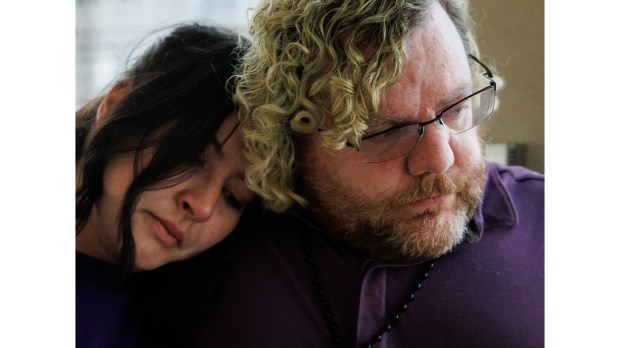
With county supervisors now poised to demand answers, one simple question looms over the breakdown: How did it come to this?
The edict
On the first Monday of 2021, Daniel Little, then the director of the county’s Department of Family and Children’s Services, explained a new edict in an email to the staff: Lawyers from the County Counsel’s office would now have a larger role in determining whether a child could be removed from a family.
“As you know, the County and our Departments are strongly committed to racial justice and to healing the historical underlying disproportionate representation of children of color in the child welfare system,” Little and Deputy County Counsel Hilary Kerrigan wrote.
To that end social workers and lawyers would partner in efforts “to prevent the need for removal of children from their homes,” they wrote.
Instead, they would focus on healing families with services like parenting classes and drug treatment programs.
That mission came after decades of disastrous outcomes for children sent into the disruptive world of foster care. In the 1960s, the publication of the book “The Battered Child” returned child abuse to the American consciousness.
In the 1970s, lawmakers mandated teachers, doctors and others to report signs of child abuse, but the system became so flooded with referrals that children bounced from one group home to the next and back again, often numbed by powerful psychiatric drugs, or ending up in juvenile hall or on the streets.
Over time, the system, not the parents, was blamed for causing trauma to the children, said Steve Baron, a member of Santa Clara County’s Child Abuse Prevention Council who has witnessed the evolution of child welfare in America.
“The goal shifted from protecting children from abuse and neglect to diverting them from the system almost at all costs,” Baron said. “And it’s gone way over the deep end.”
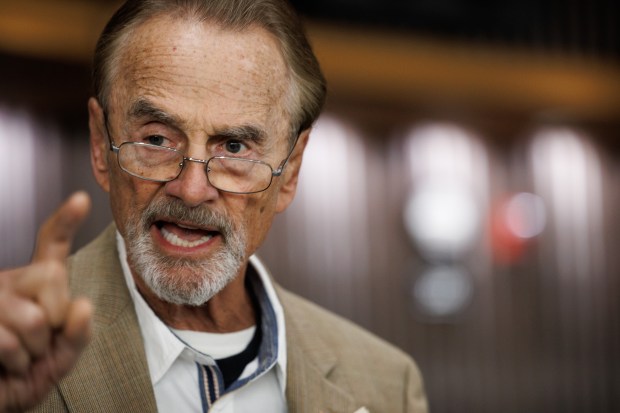
Santa Clara County doubled down on its mission amid the tumultuous year of 2020. With COVID and the George Floyd protests roiling the country, progressive governments like Santa Clara County took a deeper look at how their institutions perpetuated racial injustices. Latinos make up less than a quarter of the county’s population but represent more than two-thirds of kids in foster care.
Any action to remove a child from a family, Little’s email continued, “must be consistent with legal advice from the office of County Counsel” — at the time run by Santa Clara’s current County Executive James Williams.
Social workers and their supervisors immediately pushed back. They are the ones with master’s degrees in child welfare and personal knowledge of the nuance and complexity of cases. Would they be sidelined in favor of legal opinions from lawyers?
The laws hadn’t changed. Only the interpretation had.
The dissension
As the changes took hold, social workers said once-collaborative meetings with county attorneys to discuss the fate of families grew contentious. Loud arguments broke out as social workers pleaded their cases, they said. Some ended in tears.
Social workers were told they could appeal their cases to top leaders within the agency. But they often felt it was futile.
Over time, they say, parents with highly risky behaviors were given more leeway. Abused or neglected children who in the past would have been put under court oversight were left in the care of parents who promised to do better, but often failed to complete classes or treatment programs or, in baby Phoenix’s case, even answer their door when social workers knocked.
“God only knows how many children are unsafe because of the decisions that have been taken out of our hands,” social worker supervisor Suzanne Romero said earlier this month at the union rally outside the Board of Supervisors meeting.

The county’s new power-sharing with the County Counsel’s office had a swift and dramatic impact.
From July 2021 to July 2023, the number of children living out of their parents’ care after police or social worker interventions was cut nearly in half, from 1,015 kids to 556. By comparison, Alameda County, with 13% fewer residents, reported nearly twice that number in 2023, with 1,061 kids separated from their parents. Much smaller Bay Area counties also had more children removed from their homes — San Francisco (641) and Contra Costa (639) — than Santa Clara County.
Over the past two years, Santa Clara County’s child welfare agency has slashed the number of social workers in juvenile dependency court from as many as 48 to as few as 16. With far fewer petitions filed to remove children from their families or have court oversight of their cases, they weren’t needed.
By the county’s measure, the shift in strategy had been a success. But the growing internal discord and declining case numbers were so dramatic, they drew the wrong kind of attention from one powerful group — investigators from the California Department of Social Services.
The investigation
Spurred by complaints, state investigators descended on Santa Clara County in 2022 to conduct a nearly year-long review into the county’s child welfare agency. No other county in California has been investigated for their child removal policies in at least the last five years.
The findings — sent to the county’s Social Services Agency in February, the same month baby Phoenix was born — were alarming: State investigators looked into 10 of the county’s child welfare cases and found “multiple” instances where children were placed into protective custody by law enforcement, only for the county to immediately return them to the “unsafe parent.”
Click here to read the state investigation and the county’s response
Social workers shared that county lawyers had a go-to explanation for their commitment to family preservation: “The county has been violating parents’ rights by removing children from their care,” and it is now “‘fixing’ that practice,” the report said.
The findings were kept so quiet that county supervisors first learned about the probe in November — nine months after it was delivered and the day before the Bay Area News Group broke the story about it.
Supervisor Sylvia Arenas, a former early education specialist in juvenile dependency court, had raised similar concerns after hearing from social workers, children’s lawyers and judges since she took office earlier this year.
“To not be told about this investigation is certainly a breach of trust,” she said. “I want an overhaul.”
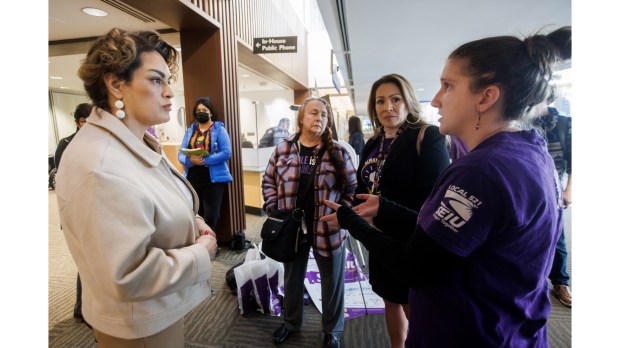
The trailblazer
On Oct. 19, Little received a standing ovation during an awards luncheon honoring him for being a “true trailblazer” in child welfare reform. Promoted in March to lead Santa Clara County’s Social Services Agency, he was praised by a local nonprofit as a “driving force” in keeping at-risk children out of foster care.
In a dark suit and tie, with his name tag tilted to the right, Little told the gathering how as a grad student he was moved by stories of trauma from young people who “talked about the separation from their family and this longing and this emptiness.”
His work now, he said, was intended to prevent that kind of despair.
But while county leaders took pride in the plunging number of child removals, Little insisted one thing was even more important.
“We as a county child welfare agency always have to prioritize safety,” Little said in his speech. “We also have to recognize the impact of the decisions we make.”
Everything would soon change. The very same day, San Jose police arrested 38-year-old David Anthony Castro on a felony child endangerment charge for the death of baby Phoenix.
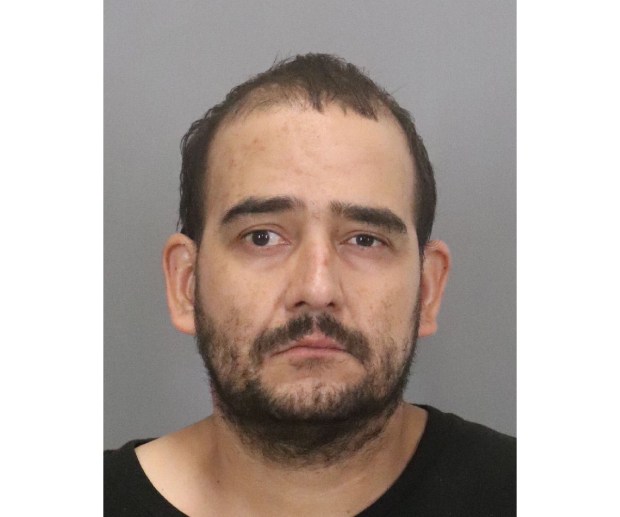
The history of neglect
Phoenix Castro’s family had first come to the attention of Santa Clara County’s Department of Family and Children’s Services in 2019, when David Castro was arrested for slugging Emily De La Cerda’s belly while she was pregnant with the couple’s first child. The mother had an even longer history from her two previous children now in the custody of their fathers.
The disturbing details of the Castro family, many reported in recent weeks by the Bay Area News Group, are laid out in police reports, court records, autopsy reports, child dependency case records and internal emails obtained by this news organization. County officials released even more about the couple’s history this past week.
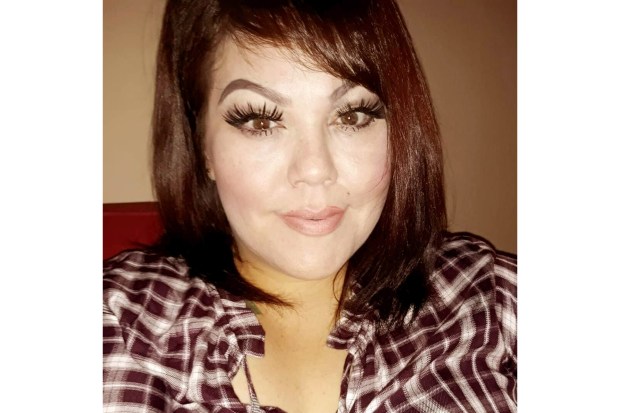
Just as the child welfare agency was shifting to its new family-focused strategy, social workers were called about the family another eight times for disturbances. In 2020, De La Cerda ran into traffic holding one of her children while high on meth, records show. In July 2021, when the children were found sucking on batteries, social workers also documented flies swarming in the kitchen and no food or baby formula in the home, broken furniture blocking hallways, children’s bottles and toys scattered on the rooftop, and the couple’s 1-year-old daughter, sitting in a plastic drawer on the floor, so dirty that a police officer bathed her.
The couple had agreed to a voluntary “family maintenance plan” to become better parents, but as Kraft would later tell county authorities, they never followed through.
Still, every time Kraft tried to remove the children from the couple’s care, the County Counsel’s office told him there was “not enough” to take them away, a social worker supervisor wrote in an email to the department’s director on Nov. 13.
“This is a direct result,” the supervisor wrote, “of the messaging that all (child) removals are traumatic.”
The new baby
It wasn’t until February 2022 when police arrested the couple on outstanding bench warrants that the children, then 2 and 3, were removed from Castro’s and De La Cerda’s care.
The children were initially placed in the custody of Castro’s aunt, Anna Hampton, while De La Cerda was pregnant with Phoenix, their third child. Two months before the baby’s birth, both parents tested positive for opiates, cocaine and methamphetamine.
Still, the agency overlooked all those red flags when it came to baby Phoenix.
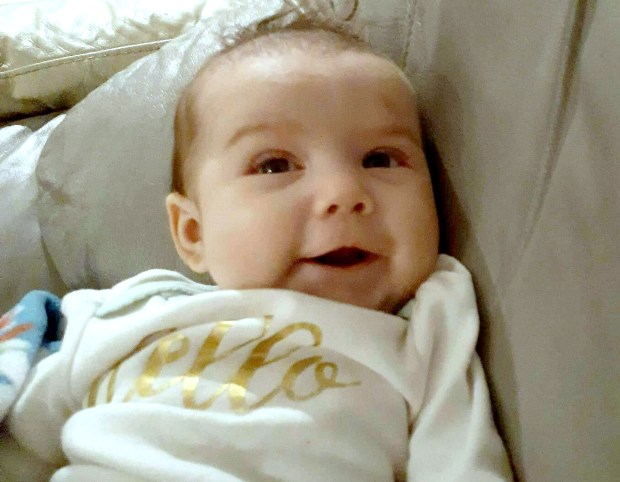
In custody hearings, Hampton said she remembers Kraft raising concerns that yet another innocent child could be in danger.
“He pleaded and said, ‘Please don’t give that child to the parents,’” Hampton said in an interview after one of Castro’s recent court hearings.
And when Phoenix was born a day before Valentine’s Day with opioid withdrawal symptoms, another social worker assigned to the infant’s case determined that the danger was “very high” of leaving her with her parents.
The day before the baby left the hospital, Kraft tried one more time to stop it.
“I worry,” he wrote in a prophetic email to his superiors, “that Phoenix may be subject to that same level of neglect and possibly result in her death.”
The safety plan
The social worker in charge of the baby Phoenix case has declined multiple interview requests, but he told colleagues that he had unsuccessfully tried to convince the County Counsel to not let Phoenix go home.
However, in an interview and a written statement, Damion Wright, recently promoted to direct the Department of Family and Children’s Services, has denied the County Counsel’s office was involved in the decision, outraging social workers who believed he was wrongly blaming the case worker.
Without a removal, baby Phoenix was designated, in social worker parlance, “safe, with a plan,” records show. That plan meant that the baby’s maternal grandmother — who by then was caring for the older siblings — would visit three days a week and a social worker would check in from time to time.
For most of her baby’s short life, De La Cerda was living away from home, first to serve jail time on an outstanding warrant, and later to undergo mental health treatment. So Castro cared for the baby alone.
Some reports showed promise. The social worker noted that Phoenix was “well groomed,” and “peacefully” resting in her bassinet. But on the day of another appointment, Castro didn’t answer the door a red flag for social workers. Because the court was not involved in the case, there was little they could do: Castro’s cooperation was voluntary.
When Phoenix was just a month old and De La Cerda was back from jail, Castro called police after she locked him and the baby in a bedroom for two days. Social worker supervisors expressed concerns, but gave credit to Castro for calling police and he was allowed to keep the baby.
In April, during the last visit, Castro thanked the social worker for giving him a chance to care for Phoenix. Most people would look at his past, he said, and assume the worst.
One month later, in May, with broken glass pipes on the kitchen counter near the baby bottle and opioids and methamphetamines in the kitchen, Castro changed the baby’s diaper. Fentanyl covered her little pink onesie as father and daughter fell asleep together on the living room couch.
She never woke up.
Four months later, her mother would die too from her own fentanyl overdose.
There was no family left to save.
The reforms
In the tragedy’s aftermath, Williams, the county executive, admitted the county “dropped the ball” and promised full transparency.

But after weeks of backlash from social workers, Little and Wright have agreed to only brief interviews.
Little pointed out that both the child welfare agency and the state are reviewing the case “to uncover the decision-making” that preceded baby Phoenix’s death.
In a statement this week, Wright said he is preparing for Tuesday’s special hearing called by Supervisor Cindy Chavez. He said he is “reviewing information surrounding the tragedy” and working with his staff and community partners to “determine the best pathway ahead.”

He has already adjusted course. As the pressure mounted last month, he made a dramatic and unexpected announcement to his staff, outlining a series of reforms that lowered the bar to remove young children from risky, abusive homes, and beefed up the department’s monitoring of babies born with drugs in their system.
The impact was swift and startling. The number of cases the county filed to protect children in dependency court spiked from 5 in October to 29 in the first three weeks of November.
Suddenly, there weren’t enough social workers assigned to dependency court to keep up with the new cases. In an email to the staff, Wright pleaded for volunteers to fill the highly-specialized roles.
Social workers embraced some of the new policies, including a return of the “sibling protocol” that would more readily take action if other siblings had open cases. But they found one change in particular baffling: Social workers on the front lines would be cut out entirely from meetings with the County Counsel’s office about removals. Only managers would be invited in.
Kraft’s colleague Sandra Gregory called the change “absurd” and a “disservice to families.”
The showdown
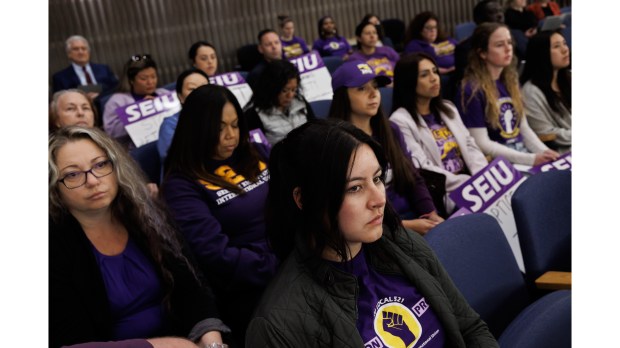
After weeks of silence, social workers took a bold gambit. On Dec. 5, Kraft joined two dozen social workers wearing purple union shirts and marched into the Board of Supervisors chambers to vent their frustrations.
He and others worried they could be fired for publicly stating anything that might be deemed confidential in their child welfare cases. Now, many felt like they had no choice.
One by one, they called for accountability. They called for change. They called for an end to the outsize power of the County Counsel’s office.
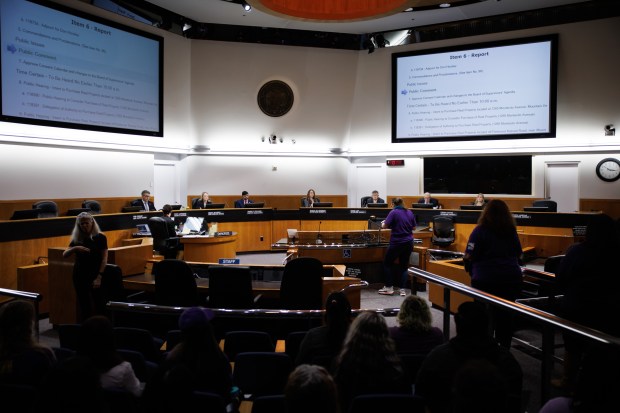
Kraft was the fifth to speak. Gregory stood nearby for emotional support. She had consoled Kraft the day he learned of Phoenix’s death and had summoned her with a text: “I’m not OK. I’m not OK.”
Standing at the podium, Kraft cleared his throat and explained his role in removing the older children, how it was “very distressing and upsetting when the department failed to act on behalf of Phoenix,” and how his warnings were ignored.
“Phoenix’s death was avoidable,” he said.
Kraft’s 1-minute time limit ended before he finished. As his co-workers vigorously applauded, and a few stood up in ovation, he rushed straight to the back of the council chambers and out the lobby door. The weight of the baby’s death was too heavy. Management’s lack of accountability, he said, was crippling.
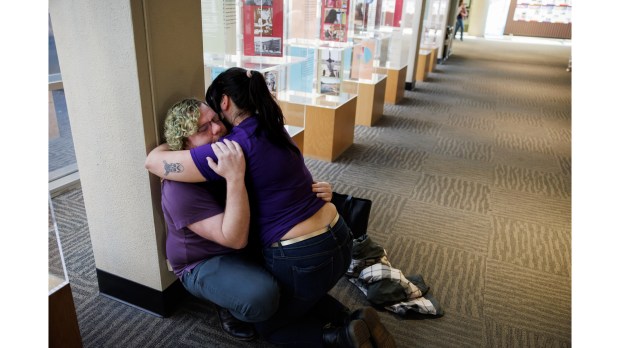
“They want to absolve themselves of the responsibility that is theirs to hold. And for a while now I felt since no one else is picking it up, I have to hold that. And I’m tired of it,” he said, choking back tears. “I’m not the one who did not remove baby Phoenix. I’m not the one who opted to leave her in an unsafe situation. I actively argued the contrary. And still, management wants to think that they had no part in it. And that’s wrong.”
He gathered himself and rose from the floor.
Children need to be safe, he said, and he believes families should be held together “when possible.”
But the pendulum, he said, has swung too far.
It’s time now, he said, “to find middle ground.”
HOW TO GET HELP
Need help with substance abuse or mental illness? Contact the Substance Abuse and Mental Health Services Administration’s 24/7 helpline at 1-800-662-4357.
For parenting resources, contact the California Parent & Youth Helpline at 1-855-427-2736 any day from 8 a.m. to 8 p.m.
Source: www.mercurynews.com

